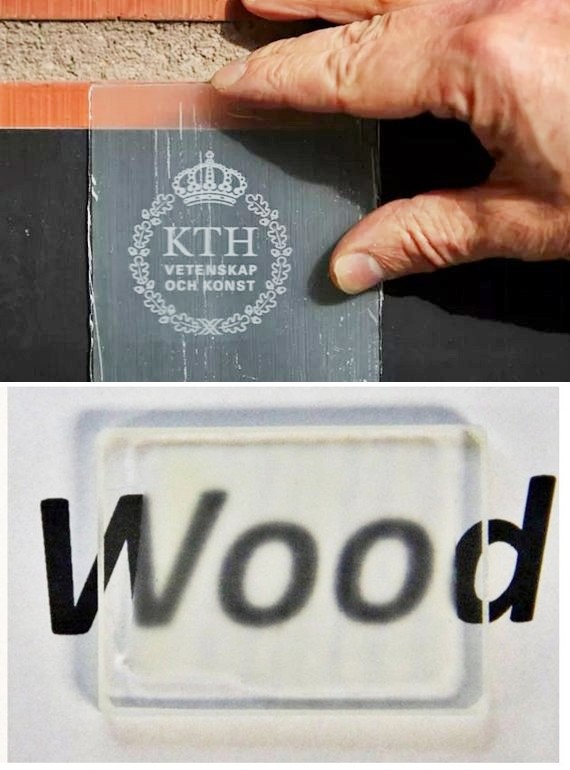Swedes and Americans in Race to Mass Produce Transparent Wood
| Arthur Dominic Villasanta | | May 18, 2016 04:24 AM EDT |
(Photo : KTH/University of Maryland) Transparent wood. The Swedish version (top) and the American version (bottom)
Wood that's as transparent as glass but is still good old wood has been developed separately by scientific teams in Sweden and the United States. This transparent wood might even replace glass in some applications.
Swedish scientists have also developed a production process particularly well-suited to mass production and large-scale applications of their version of see-through wood. They're also looking into increasing the material's transparency and using a wider variety of woods that can be made transparent.
Like Us on Facebook
"It's attractive that the material comes from renewable sources," said Prof. Lars Berglund, who led the research team at Sweden's KTH Royal Institute of Technology that developed the new process.
"It also offers excellent mechanical properties, including strength, toughness, low density and low thermal conductivity."
To make see-through wood, scientists added prepolymerized methyl methacrylate (PMMA) to wood samples. PMMA altered the refractive index of the resulting mixture, turning the wood transparent. The transparent wood can also be made more translucent by fine-tuning the wood-to-PMMA ratio.
In the United States, researchers at the University of Maryland also developed transparent wood but their version is more transparent. More important, researchers said their version is both stronger and more insulating than glass, with better biodegradability than plastic.
To make their version of see-through wood, American researchers first boiled a wood block in water, sodium hydroxide and other chemicals for some two hours. This removed the lignin, the molecule that gives wood its brownish color. Epoxy was poured over the block to turn it transparent. The epoxy also made the wood four to five times stronger.
American scientists, however, have only made transparent wood with a size of 5 inches x 5 inches, which is still better than the product achieved by the Swedes.
Transparent wood relies on the natural composition of wood combined with the refractive qualities of an epoxy. The basic structures in the wood remained the same despite the removal of lignin.
The tiny channels trees use to transport nutrients were unaltered by the process but became conduits for light, focusing it and allowing it to pass through.
Tagstransparent wood, Sweden, KTH Royal Institute of Technology, Prof. Lars Berglund, University of Maryland
©2015 Chinatopix All rights reserved. Do not reproduce without permission
EDITOR'S PICKS
-

Did the Trump administration just announce plans for a trade war with ‘hostile’ China and Russia?
-

US Senate passes Taiwan travel bill slammed by China
-

As Yan Sihong’s family grieves, here are other Chinese students who went missing abroad. Some have never been found
-

Beijing blasts Western critics who ‘smear China’ with the term sharp power
-

China Envoy Seeks to Defuse Tensions With U.S. as a Trade War Brews
-

Singapore's Deputy PM Provides Bitcoin Vote of Confidence Amid China's Blanket Bans
-

China warns investors over risks in overseas virtual currency trading
-

Chinese government most trustworthy: survey
-

Kashima Antlers On Course For Back-To-Back Titles
MOST POPULAR
LATEST NEWS
Zhou Yongkang: China's Former Security Chief Sentenced to Life in Prison

China's former Chief of the Ministry of Public Security, Zhou Yongkang, has been given a life sentence after he was found guilty of abusing his office, bribery and deliberately ... Full Article
TRENDING STORY

China Pork Prices Expected to Stabilize As The Supplies Recover

Elephone P9000 Smartphone is now on Sale on Amazon India

There's a Big Chance Cliffhangers Won't Still Be Resolved When Grey's Anatomy Season 13 Returns

Supreme Court Ruled on Samsung vs Apple Dispute for Patent Infringement

Microsoft Surface Pro 5 Rumors and Release Date: What is the Latest?










